It’s time for some #realtalk about No See Ums on Sanibel Island.
Dig if you will the picture: It’s your first trip to Sanibel Island. You check into your hotel and run down to the beach just in time to catch one of our storybook southwest Florida sunsets. The air is still. The Gulf of Mexico is like glass. You see a dolphin break the water just a few feet offshore. You see silhouettes of palm trees up and down the coastline. You even think you see the fabled green flash in those few seconds immediately after the sun descends below the horizon of water. Life is good. Sanibel is truly a postcard-perfect paradise. Just like all those photos you saw online.
You had a long day traveling, so you saunter back to your hotel room and go to bed early. After all, you definitely want to be up with the sun and one of the first people out on that beach in the morning. You heard that’s when the shelling is best.
However, upon waking the next morning, you discover something deeply unsettling. Your ankles and calves are completely covered with lots of small, red, raised bumps – and they are more itchy than anything you’ve ever experienced before.
“Everything was fine when I went to bed last night,” you think to yourself. “This hotel must have bed bugs. Disgusting. I need to go talk to the manager. I think I’m going to write a bad review.”
The only problem: you’re dead wrong.
Those aren’t bed bug bites. Those itchy bumps are the delayed effects from No See Um bites. During your sunset stroll to the beach last night, the no see ums were viciously attacking you and you didn’t even feel (or see) it happening.
Keep reading below to learn more about No See Ums on Sanibel and how to protect yourself against them…
RELATED: Join our BRAND NEW Sanibel + Captiva Island Art + Photography Group!
ALSO RELATED: Connect with @sanibel_barometer on Instagram!
Uhhmmm, what the hell is a No See Um?
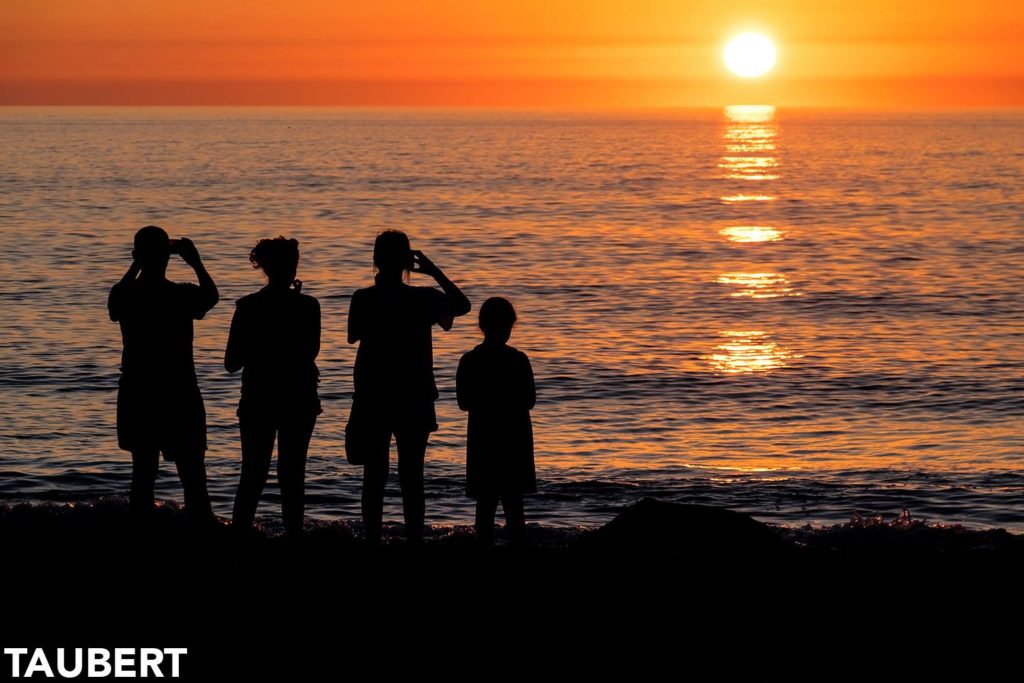
Also sometimes referred to as biting midges, biting gnats, pinyon gnats, punkies, sand-flies, moose flies, five-Os, or sand-fleas; No See Ums are members of a family of tiny flying insects (officially referred to as Ceratopogonidae) that can be as small as a grain of sand and don’t usually grow any larger than three millimeters. Because they are so tiny, you often don’t notice them (Get it? No-SEE-um?) as they are biting you. But, trust us, you’ll definitely notice you’ve been attacked by these dreadful bugs sometime AFTER you’ve had the misfortune of crossing paths with them.
No See Ums are among the smallest blood-sucking insects on earth and they are justly famous for their nuisance biting habits in habitats such as coastal lagoons, estuaries, mangrove swamps, and tidal flats.
Worldwide, there are over 4,000 species of biting midges; and in Florida alone, there are 47 different species.
As a nature-friendly tropical island, with approximately 67% of the land protected as conservation land, Sanibel offers the perfect environment of humid moisture and thick vegetation that No See Ums love to call home.
But the truth is, No See Ums aren’t only common on Sanibel and Captiva, but ALSO in the Caribbean AND any other tropical area where there is ample water and plant growth nearby. In fact, “the only large inhabited land-masses where they are known to be absent are New Zealand and the southernmost areas of South America”.
Why don’t they just spray for No See Ums on Sanibel Island the same way they do for mosquitoes? First off, we definitely have our fair share of mosquitoes to contend with on Sanibel, even with the spraying. PLUS when confronted with these other pesky bugs that boast an incredibly short (2-6 weeks) lifespan AND a habitat that encompasses most of southwest Florida, there just isn’t a whole lot of No See Um relief that the Lee County Mosquito Control District (LCMCD) is able to realistically offer. While they do claim that “treatments to control adult mosquitoes may help alleviate adult No See Um populations”; the truth is that any attempts to try to control No See Ums on a county-wide scale would necessitate almost daily spraying, and the resulting environmental harm from that continual spraying would far outweigh the potential benefits.
Let’s talk a little more about those No See Um bites…
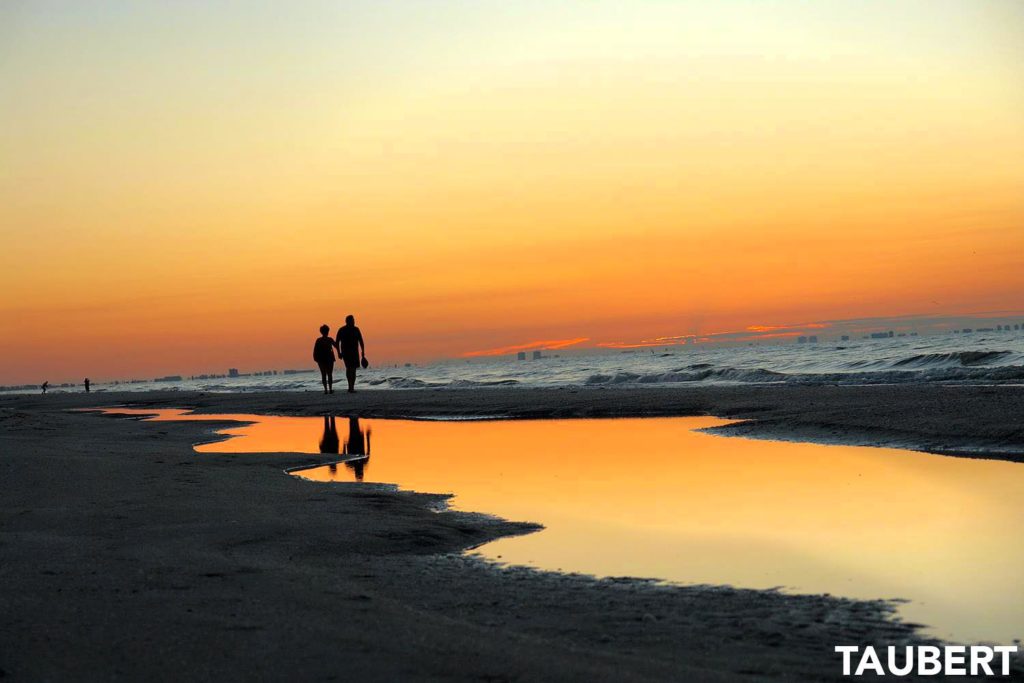
One of the most frustrating things about No See Ums on Sanibel Island (especially to visitors who always seem to get eaten alive by them) is the fact that No See Ums (for reasons not completely understood) seem to be very selective regarding who they bite, and when, and why.
Couples who walk the same stretches of early morning (or early evening, or even midday) shoreline often report scenarios where one of them has been voraciously attacked by the No See Ums, while the other has no bites at all.
Was it some lotion or fragrance that one of them was wearing (or not wearing) that is responsible for the difference? Was it the fact that one of them is highly allergic to the bites, while the other is immune for some reason? Do No See Ums have gender preferences when it comes to who they attack? Even after all these years, it’s hard to answer these lingering questions with any level of confidence or statistical significance.
Many people have thought long and hard about these conundrums and social media posts + message boards all over the Internet are filled with conflicting theories and ensuing arguments about why some people suffer due to No See Ums on Sanibel Island while others don’t. Still, there appears to be very little agreed-upon and scientifically backed consensus – and the answers to most of these questions remain an enduring mystery.
Here’s some of what we do know about No See Ums on Sanibel Island..

Let’s start by pointing out that, just as with mosquitoes, only the female No See Ums bite. The reason the female No See Ums bite is because they require the proteins from blood to make their eggs.
The reason No See Ums attack human beings is because they are drawn to the scents of carbon dioxide and lactic acid. These enticing elements are expelled from human bodies whenever we exhale and/or sweat. The odors of carbon dioxide and lactic acid alert female No See Ums that the presence of blood is nearby – and that is precisely what they are seeking to feast upon.
There is some anecdotal evidence that body heat and/or dark-colored clothing may also play roles in attracting No See Ums. These are bugs that hate full sun. Too much direct sunlight poses a threat to No See Ums, it causes them to dehydrate, which can lead to an untimely death. This is why we only tend to encounter No See Ums at dawn, at dusk, and in the shade. As a continuation of this protective mechanism, No See Ums also seem to avoid light colors, while appearing to be attracted to the darker hues. Coincidentally, darker colored clothing also attracts more heat AND makes people sweat more.
Are No See Ums on Sanibel Island worse during particular times of year?
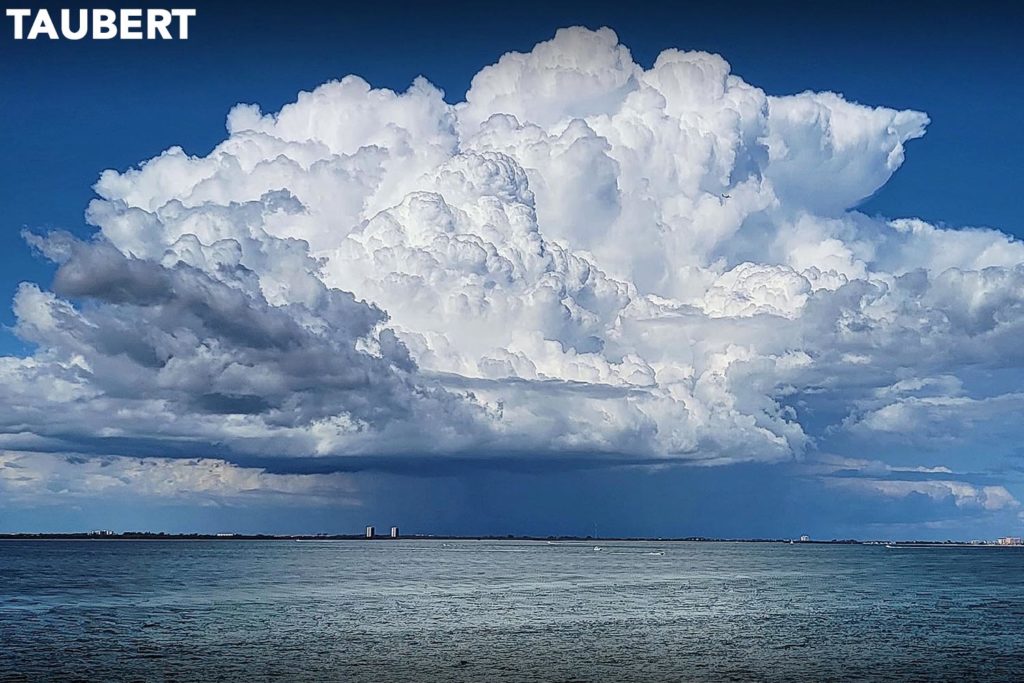
While No See Ums are more active and appear in higher numbers during rainy weather; Sanibel, southwest Florida, and the entire Gulf Coast fall into a zone where these undesirable pests are present and active all year round.
The biggest factor in avoiding No See Ums on Sanibel Island is not the time of year or season, but the time of day and the strength of the breeze. No See Ums are always worse at dawn and dusk and anytime the air is still. But even during full midday sun, the beach will be clear of No See Ums, but the short and shady pathways heading to the beach is where they have retreated. All it takes is a quick stop in the shade near any type of vegetation for the No See Um attack to commence.
Once these female No See Ums have zoned in and landed on you, that is when they commence their silent attack. Although the amount of blood they take is insignificant, these No See Ums cut tiny lacerations into your skin and then secrete an anticoagulant (which is in their saliva) to keep the small trickle of blood flowing. Many people have at least some degree of an allergic reaction to this anticoagulant. It is this reaction to the No See Um secretion which causes the manifestation of the itchy and annoying bite marks.
Here is where the experience starts to vary from person to person. On Sanibel, No See Ums appear to have their greatest impact on tourists arriving to the area. Many local residents seem to build up some level of immunity to the biting, over time. There is also some small percentage of the world population who collectively appear to, for whatever reason, be completely immune to any adverse reactions from No See Um bites.
Then there’s another group of people who feel No See Um bites almost immediately.
A third (and seemingly larger) group of people actually experience a delayed effect to the No See Um bites – with physical evidence of the bite not showing up until hours (or even days after the bite actually occurs).
This delayed effect from No See Um bites is what sometimes causes confusion and leads the bug bite victim to suspect they have been attacked by bed bugs at their hotel (a mistaken accusation that is levied much more commonly against innocent Sanibel lodging operators than you would probably ever believe).
Once the physical effects of the No See Um bites have shown up, they tend to be more severe (and more numerous) than mosquito bites. Often, they initially present as clusters of small red dots on the skin. Those small dots (depending on how sensitive the specific bite victim is to the No See Um anticoagulant) often continue to get worse over the period of the next several days.
In some people, No See Um bites can produce intense itchiness and raised, weeping welts capable of lingering on the skin for more than two weeks.
Aside from any temporary comfort capable of being provided by cold compresses (and perhaps some minimal relief provided by antihistamines like Zyrtec or Benadryl), there is very little that can be done to quell the relentlessly itchy sensations.
How to prevent No See Um bites while visiting Sanibel Island

Early intervention is the strategy that needs to be adopted when attempting to prevent No See Um bites. If you wait until evidence of the first bites appear, it is already too late.
In terms of preventative measures you can take against No See Um bites while visiting Sanibel Island, the first bit advice you’re likely to hear is to limit your exposure to outdoor areas in the hours between dusk and dawn, in the shade during mid-day, and especially when there is no breeze. This is sound advice. It is possible to avoid No See Ums by staying inside or in screened-in locations during the dark hours – and walking quickly through the shaded areas during daytime. But it’s also very likely that you’ll want to get out on those beaches for the sunrises and sunsets – and engage in some nightlife.
The second bit of advice you’ll hear is to wear clothes that cover your exposed skin. Think: long sleeves, long pants, etc.
The very obvious problem with this advice is the fact that we’re talking about getting bundled up in cold weather clothes on a hot and humid barrier island in south Florida. It’s just not a practical solution.
I’ll be completely honest. I’m a photographer. I’ve taken some of those gorgeous sunrise and sunset photos of Sanibel that circulate on social media and make people want to visit this island. These dawn and dusk photoshoots can go either way. Sometimes I’m lucky and there’s enough of a breeze to keep the No See Ums at bay and I’ve been able to walk away unscathed. But I’ve also had days when I have been eaten alive taking those photos.
AND I’ve also had days when I knew I was going to be eaten alive if I went out there, so I just decided to bundle up with the long pants and long sleeves and face the unrelenting humidity down in the quest for a beautiful photo. The only thing that “dressing for success” did was ensure that my neck, face, and ears were all bit up by the No See Ums, instead. Apparently, they WILL find that open patch of skin, the area you didn’t cover.
The truth is, the joy of capturing the sunset, nighttime, and early morning beauty of Sanibel Island by camera very often comes at the cost of a fresh batch of No See Um bites.
I guess that’s why some resourceful entrepreneurs are hard at work peddling things like these dreadful Full Body No See Um Suits. A real fashion statement.
Beyond clothes, the next step up the No See Um prevention list are different types of commonly available oils that can be applied to exposed skin – especially around the elbows and ankles. We’re talking about Baby Oil, Olive Oil, and Coconut Oil.
These oils, especially the Coconut Oil can be a remarkably effective tool to use in your efforts to reduce No See Um bites. The oils don’t necessarily repel the No See Ums; what they do is create an oil barrier on your skin that these tiny insects tend to get trapped in (and have trouble penetrating to procure the blood they are seeking). This prevents them from biting you. PLUS Coconut Oil has anti-inflammatory, anti-microbial, and analgesic properties. So, in the event you do actually get bitten, it may actually also offer a primary level of treatment and relief.
In addition, a recent study by the U.S. Department of Agriculture (USDA) concluded that “compounds derived from coconut oil are better than DEET at repelling blood-sucking insects.”
IMPORTANT: There is one big concern you should consider before using any of these oils to prevent No See Um bites on Sanibel Island: Florida is a very sunny place. If you apply these oils to your skin and then go out into the sun for any amount of time, you will likely end up with a very bad sunburn.
Our advice, if you’re going to use any oils to reduce the bites of No See Ums on Sanibel Island, be certain only to apply them for temporary early morning or evening use (when the No See Ums are at their worst). Always be sure to wash the oils off and apply SPF lotions before you head out under the sun.
Effective Sprays, Lotions, and Towelettes for No See Ums on Sanibel Island
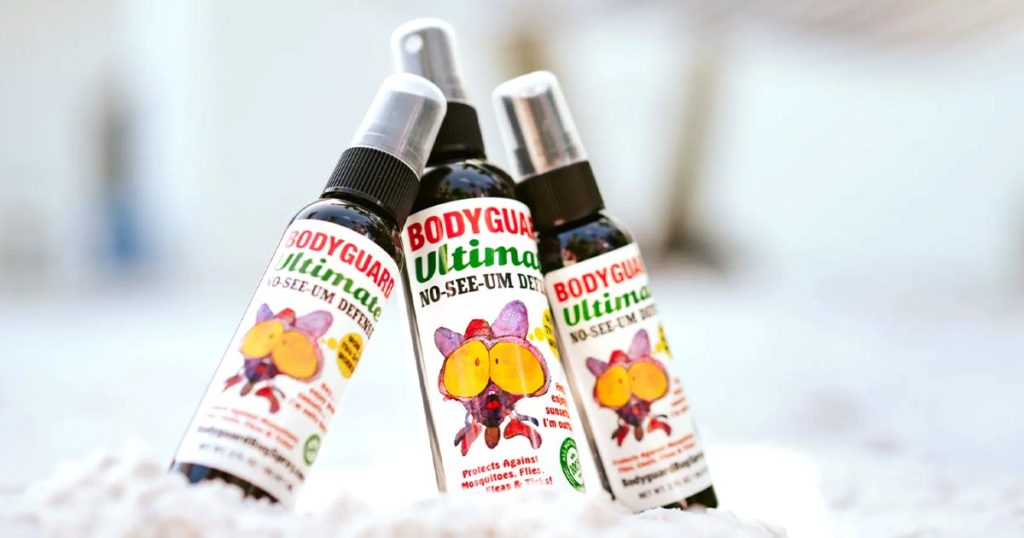
Another step up the No See Um prevention list is where you’ll find the “All Natural” bug sprays and lotions. These solutions tend to primarily be proprietary blends of essential oils and fragrances which have historically been used to repel No See Ums (without any harsh chemicals).
One of the most commonly recommended All Natural bug sprays on Sanibel Island happens to be one that was actually invented by Elke and Brian Podlasek, owners of The Island Cow restaurant on Sanibel Island. It is called the Bodyguard Ultimate No See Um Defense. This proprietary blend of natural oils, including coconut, mineral, lemongrass, and jojoba oils ALSO includes neem oil – a naturally occurring pesticide taken from seeds from the neem tree. Their website states: “It’s environmentally friendly. It’s safe for your kids. It’s chemical free. It smells great. It’s organic. You can use it on your pets. But most importantly, it works!”
The last step up the No See Um prevention list are bug sprays and lotions with active ingredients such as Picaridin or Deet. These solutions get a mixed reaction. There are many people who do not want bug sprays containing such harsh chemicals on their skin (and/or entering their bloodstream via application to their skin). On the flip side, there are many people who do not believe in the efficacy of lotions and sprays without these time-tested chemicals.
The most commonly suggested chemical-based bug sprays and lotions frequently used on Sanibel are Sawyer Premium Insect Repellent with Picaridin (20%); Avon Skin So Soft Bug Guard with Picaridin (10%) – these are also available as towelettes; and Deep Woods Off with Deet (25%) – these are also available as towelettes.
What if I acted too late and I’m already covered with No See Um bites?
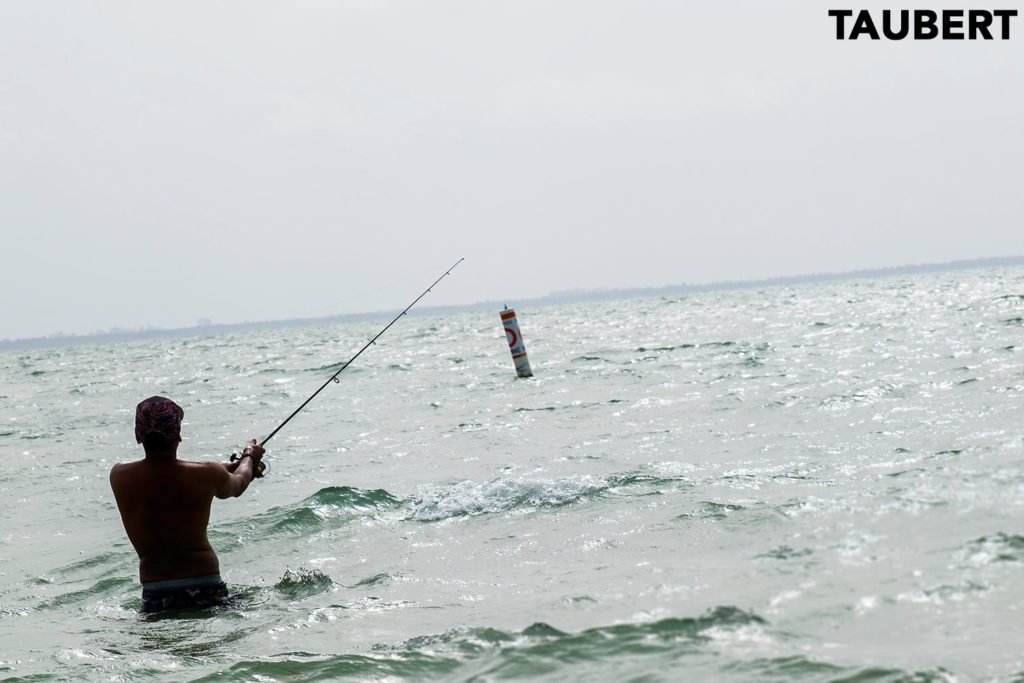
If you didn’t take action to prevent No See Um bites, you will need to resort to treatment mode.
Rule number one: take preventative measures moving forward. Even though you already have No See Um bites, you can and will get more of them if you do not take at least some of the advice we’ve already gone over. Let’s stop the problem from getting any worse.
Rule number two: all you can really do is try to relieve a little of the discomfort and itchiness while you wait for time to pass – and it will probably take almost two weeks for the No See Um bites to run their course.
Cold compresses will be one of your most effective tools to reduce the itch. Wrap an ice pack in a dish towel and apply it directly to the itchy No See Um bites.
Anecdotal reports reveal varied levels of relief from applying witch hazel to the bites (to soothe and calm down the skin). The same goes for using Benadryl Extra Strength Itch Relief Stick, which can be applied directly onto bites for relief.
Oral antihistamines, such as Zyrtec and Benadryl have also been used to varied levels of relief.
In the end, No See Ums on Sanibel Island inflict bites that are itchy. Often, excruciatingly itchy. But they’re not the end of the world. No See Um bites are just part of the price of visiting Sanibel Island – one of the most beautiful places in the world. I get them all the time. Other friends of mine get them all the time. It doesn’t stop any of us from enjoying the things we like to do on Sanibel.
It shouldn’t stop you either.
Just be aware of what to expect, take some common sense preventative steps to reduce the incidence of No See Um bites to a more manageable level, and enjoy your time on beautiful Sanibel Island!
If you’re not following @sanibel_barometer on Instagram, then you’re missing out on half the fun!
Disclaimer: Information is harvested (at time of publication) from publicly available sources and is deemed reliable but not guaranteed – any editorial content is solely opinion-based – availability, prices, details, and etc are subject to change or withdrawal at any time and for any reason. All dimensions are approximate and have not been verified. All data should be independently verified.
